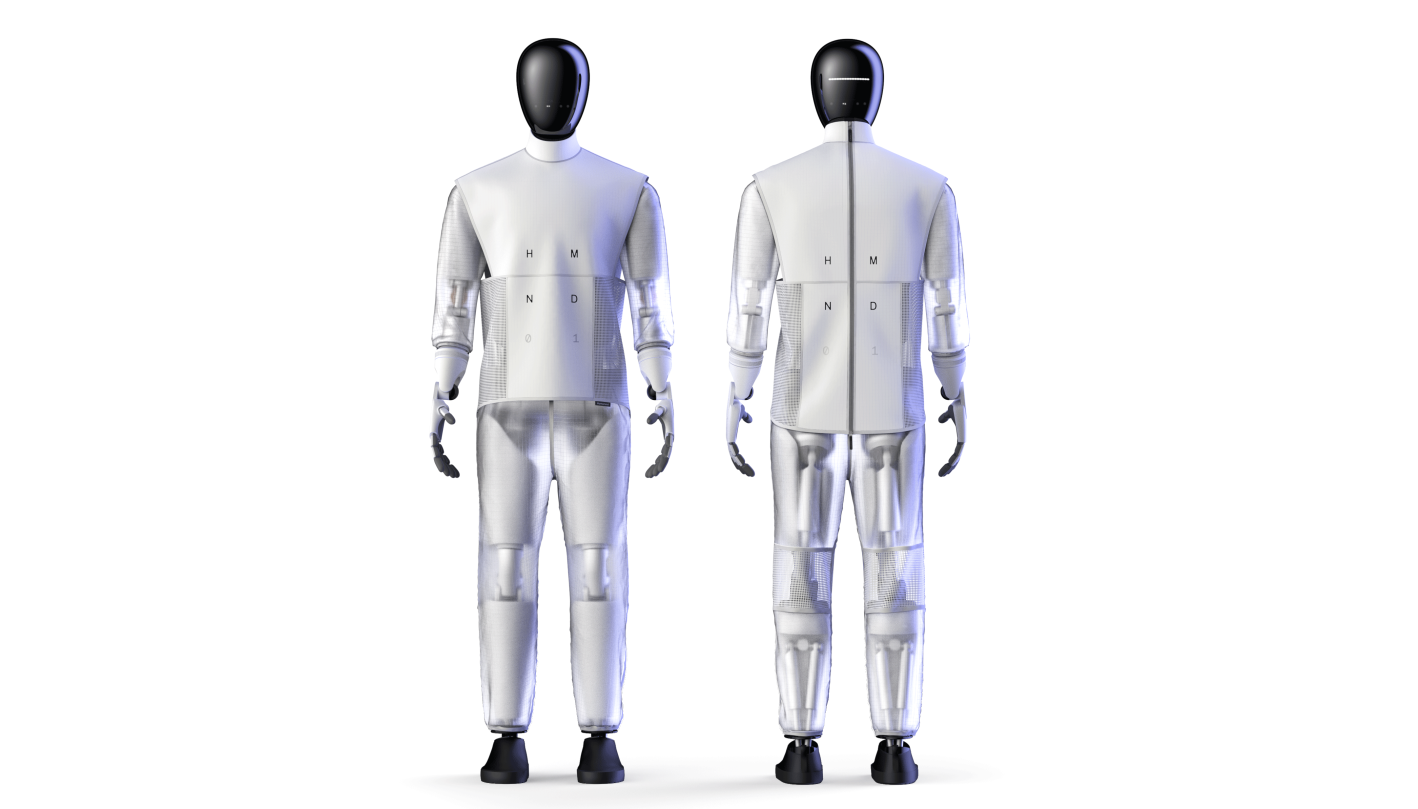Elon Musk’s Optimus demo at Tesla’s We Robot event made one thing clear: when it comes to humanoids, the spotlight still belongs to the United States. Then there is Asia — with China’s rapid developments and Japan and South Korea’s deep legacy in robotics. Headlines still gravitate toward billion-dollar budgets, rapid hardware iterations, and slick simulation reels.
Behind the noise, though, another development is unfolding in Europe — quieter, but potentially far more consequential. The next chapter of humanoid robotics may be defined not by who moves first or builds the flashiest prototypes, but by who moves with the discipline and consistency required. And Europe has the potential to lead this new era.
Regulation as strategy
In most conversations about innovation, regulation is framed as a brake. In Silicon Valley, it’s often seen as a hurdle to scale or a signal of bureaucratic overreach. But Europe — particularly in AI and robotics — is rewriting that narrative. With the AI Act now adopted, the EU is the first region to offer comprehensive legal clarity around the deployment of high-risk AI systems, including humanoid robots.
We must also consider that, eventually, other countries will likely adopt regulatory frameworks that align broadly with the EU’s, even if they’re less stringent. By designing with European standards from the outset, we’ll be well-positioned to adapt quickly as new regulations emerge elsewhere.

The 💜 of EU tech
The latest rumblings from the EU tech scene, a story from our wise ol’ founder Boris, and some questionable AI art. It’s free, every week, in your inbox. Sign up now!
This clarity matters. When investors and industrial partners can reliably assess compliance risks, they’re most likely to commit resources. In a field as complex and potentially disruptive as robotics, clear rules don’t slow down progress — they de-risk it.
Europe has also introduced or updated several other regulations that directly impact robotics:
- The Product Liability Directive now includes software and AI, reducing ambiguity and incentivising safer design practices.
- The General Product Safety Regulation streamlines cross-border market entry with harmonised safety standards.
- The Machinery Regulation defines clearer certification routes for robotic systems.
Together, these frameworks give the EU a coherent and predictable regulatory environment. Yes, it’s tough, but given the implications, this provides exactly what the humanoid sector needs: clarity.
Deployment, not demos
While the US often relies on innovation funded by Big Tech monopolies and China leans on state-driven manufacturing strategies, Europe’s robotics sector is built on modular collaboration. Startups and research labs spin out into well-funded clusters, often supported by EU-backed initiatives like RI4EU and EIC Accelerator. These programs offer access to testbeds, pilot funding, and collaborative R&D networks.
Furthermore, Europe’s geographic and industrial structure gives it a special advantage: close proximity to real-world use cases. Having neighbouring logistics hubs, manufacturing zones, and retail chains in contiguity helps speed iteration and aligns development with the continent’s actual operational pain points. McKinsey estimates that in some of Europe’s critical sectors — including retail and logistics — payroll alone amounts to $1.7 trillion (€1.55 trillion). This makes automation highly profitable and ripe for disruption.
These factors have played a key role in the strategy of Humanoid, the robotics company I founded in the UK last year. Our goal isn’t just to impress on stage; it’s far more important that we seamlessly integrate innovations into real workflows. For this, we’ve adopted a simple, modular design philosophy: a wheeled base that suits logistics environments, accelerated by simulation plus feedback from real industry trials. We believe that hype must be based on reality — a mindset that’s drawing US investors to European robotics.
This shift is already reflected in funding dynamics. Neura Robotics’ €120mn funding round in January 2025 was one of the largest in European robotics to date. And investors are now betting on full-stack teams with credible deployment strategies — instead of merely speculative tech.

A better fit for the future of work
Beyond reducing uncertainty, European regulation also helps encode values that shape how humanoid robots are developed and deployed. The AI Act requires high-risk systems — including those used in workplaces, public spaces, and healthcare settings — to meet strict safety, transparency, and human oversight standards.
Such a framework fosters trust, which is essential for robots operating in sensitive environments like factories, hospitals, or elderly care facilities. Europe’s emphasis on traceability and ethical co-development goes beyond mitigating risk — it creates the conditions for adoption at scale, where safety and dignity are non-negotiable.
Additionally, this approach helps position robots as partners. By designing for augmentation rather than displacement — as often seen in the US — European startups are modelling a more human-centred approach to automation. They’re also offering an alternative to the dominant narrative that robots will replace humans in critical roles.
It’s also worth noting that some jobs aren’t meant for people, as they hinder individuals from reaching their full potential. For instance, a humanoid could take over the task of moving boxes around a warehouse all day. This is not simply a replacement; it is an augmentation of existing automation capabilities, which empowers people to find more purpose-driven work.
That distinction comes into sharper focus when we look at the places where humanoids are most needed, such as logistics hubs, clinics, and care homes. These environments have real spatial and regulatory constraints and little room for error. The tasks there are repetitive but require precision, and people are extremely busy. In these settings, robots need to quietly support the flow of work, not interrupt it. That requires thoughtful integration, which means responding at the right pace, handling objects predictably, and, yes, staying out of the way when needed.
These are practical challenges shaped by day-to-day routines, not only engineering feats. And, from our vantage point, Europe’s cautious, user-informed development model is well-suited to meet them.
Supply chains and strategic independence
There are still concerns in European robotics that need to be addressed. As of 2025, China controls 63% of the humanoid hardware supply chain, from rare-earth magnets to key actuators. However, we’re now seeing global original equipment manufacturers (OEMs) based in Europe partnering with humanoid creators early on to co-develop hardware components together. This strategy can mitigate the risk of over-dependence.
On the other hand, while the US dominates in AI software, few actors globally offer fully-integrated stacks. We see some moves in that direction in the US and China, and Europe — which is still dependent on imports — must learn to navigate this space assertively.
Calls for supply diversification are growing. In June 2025, Benjamin Krieger, from the European Association of Automotive Suppliers (CLEPA), emphasised the need for stronger EU supply chain routes due to China’s export controls on rare-earth elements. In the US, analysts are sounding similar alarms.
To reduce dependency, Europe will need to support local manufacturing of key components, incentivise alternative sourcing, and form trade alliances outside Beijing’s orbit.
What’s next?
The next phase of humanoid robotics will not be won by whoever moves fastest. It will be won by whoever builds best.
What will this require? To start, bolstering funding and support mechanisms that help innovations advance through the later stages of the Technology Readiness Levels (TRL) scale — and move from pilots to industrial-grade rollouts. Second, forging industrial partnerships that begin during prototyping, not after. Third, policy agility to fast-track certification while maintaining the highest safety standards.
What’s at stake isn’t just who secures the most patents — we’ve already seen that happen without meaningful real-world deployment. The true challenge is whether we can build systems that integrate safely into human environments, uphold public trust, and address the real concerns people have — from privacy and transparency to everyday safety and interaction.
Europe doesn’t need to mimic Silicon Valley or Shenzhen. Instead, it needs to double down on what it already does well: interdisciplinary collaboration, ethical tech design, and industrial pragmatism.
The global humanoid race is not a sprint — it’s a long-term infrastructure project. And if we get it right, Europe could build the future’s most trusted workforce —- one that collaborates with humans and changes the world, one robot at a time.

